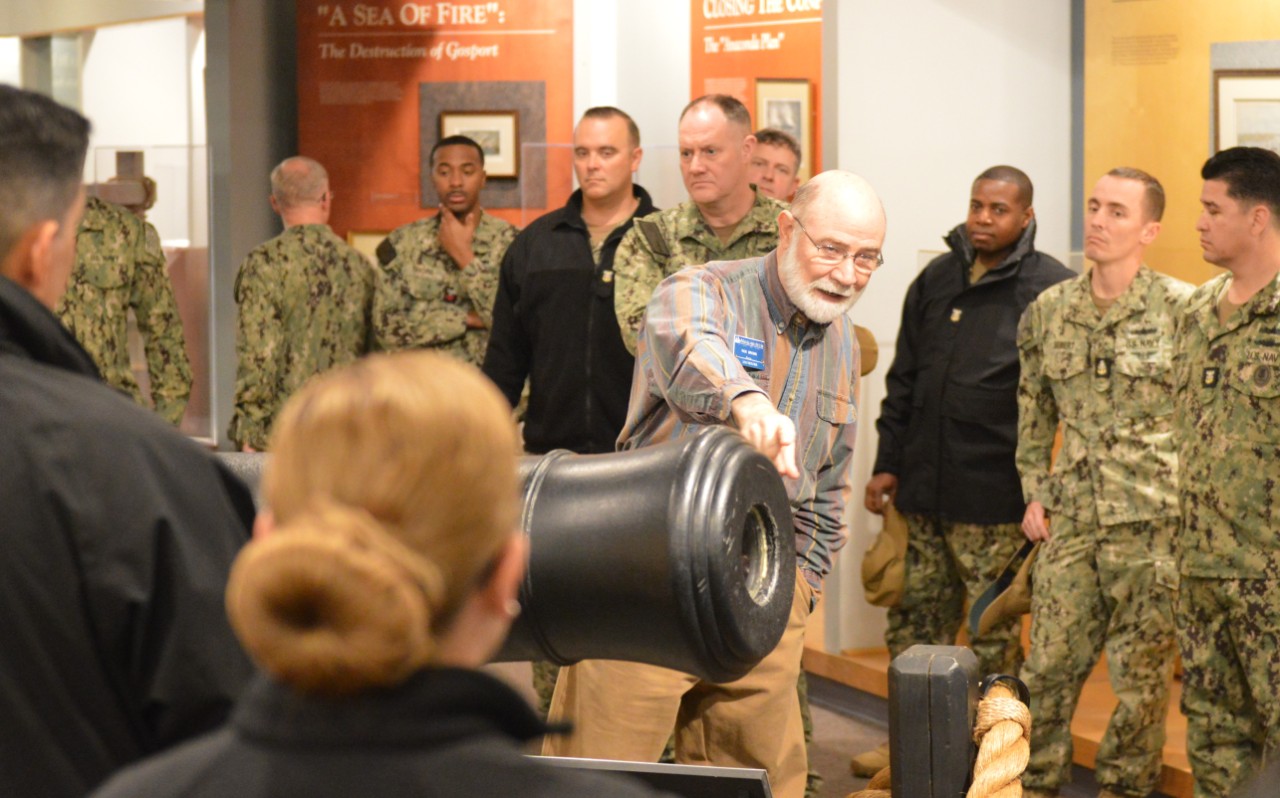Accreditation signifies excellence to the museum community, to governments, funders, outside agencies, and to the museum-going public. The museum originally achieved accreditation in 2008.
Located in Norfolk, Virginia, the HRNM is one of 10 Navy museums operated by the Naval History and Heritage Command (NHHC) open to the public across the country. The museum preserves and interprets the naval history of Hampton Roads dating from the colonial era to the present day.
AAM Accreditation brings national recognition to a museum for its commitment to excellence, accountability, high professional standards and continued institutional improvement. Developed and sustained by museum professionals for 50 years, the Alliance’s museum accreditation program is the field’s primary vehicle for quality assurance, self-regulation and public accountability. It strengthens the museum profession by promoting practices that enable leaders to make informed decisions, allocate resources wisely, and remain financially and ethically accountable in order to provide the best possible service to the public.
“For HRNM, AAM accreditation demonstrates the museum's commitment to professional excellence and affirms our vision to make history a core component of a Sailor's education and to bring the American people closer to their Navy. In preparation for the reaccreditation review, HRNM’s paid and unpaid staff, stakeholders, and leadership, worked together to critically assess the museum’s policies, procedures, and institutional culture in order to ensure that all activities meet the highest standards and best practices,” said John Pentangelo, Director of the HRNM. “The museum staff is so proud to hold this distinction and to serve our community here in the capital of the United States Navy.”
Of the nation’s estimated 33,000 museums, only 1,102 (less than 4%) are currently accredited. HRNM is one of six official Department of the Navy museums that are currently accredited by AAM.
“In layman’s terms, especially given NHHC’s limited resourcing, this 60% benchmark shows that we operate at the “Smithsonian” level of excellence in the stewardship of the collections in our care, service to the Fleet, and outreach to the American People, through all of our educational outreach and programming,” said Naval History and Heritage Command's Deputy Assistant Director, Navy Museums Division Jeff Barta.
Accreditation is a rigorous but rewarding process that examines all aspects of a museum’s operations. To earn accreditation, a museum first must conduct a year of self-study, and then undergo a site visit by a team of peer reviewers. The AAM Accreditation Commission, an independent and autonomous body of museum professionals, considers the self-study and visiting committee report to determine whether a museum should receive accreditation.
“This multi-year accreditation process ensures that we run our museums to the highest professional industry standards and best practices,” said Barta. “Nationwide, only around 3% of the nation’s museums meet the highly rigorous standards to be accredited. We’re very proud of the immense work and talent that went into the effort. HRNM’s educational programs are in steady demand, and the team has been asked by Fleet Forces Command to contribute to the history education curriculum for our Chiefs and Sailors. It doesn’t get much better than that.”
In 2019, HRNM opened a major new exhibit, “The Ten Thousand-Day War at Sea: The U.S. Navy in Vietnam.” The exhibit explores the role of the Navy during that conflict and shares the experiences of the men and women who served during that turbulent era via oral history touchscreens. HRNM is also the custodian of artifacts related to the Civil War shipwrecks of USS Cumberland and CSS Florida. Their robust educational outreach program serves the entire Navy family, including civilians, family members, and retirees. With 75 Navy and Military Sealift Command ships, 34 air squadrons, over 300 tenant commands and activities, and the largest concentration of flag officers outside of the Pentagon, Hampton Roads is truly the capital of the United States Navy.
NHHC, located at the Washington Navy Yard, is responsible for preserving, analyzing, and disseminating U.S. naval history and heritage. It provides the knowledge foundation for the Navy by maintaining historically relevant resources and products that reflect the Navy's unique and enduring contributions through our nation's history and supports the fleet by assisting with and delivering professional research, analysis, and interpretive services. NHHC comprises many activities, including the Navy Department Library, the Navy Operational Archives, the Navy art and artifact collections, underwater archeology, Navy histories, 10 museums, the USS Constitution repair facility, and the historic ship Nautilus.



